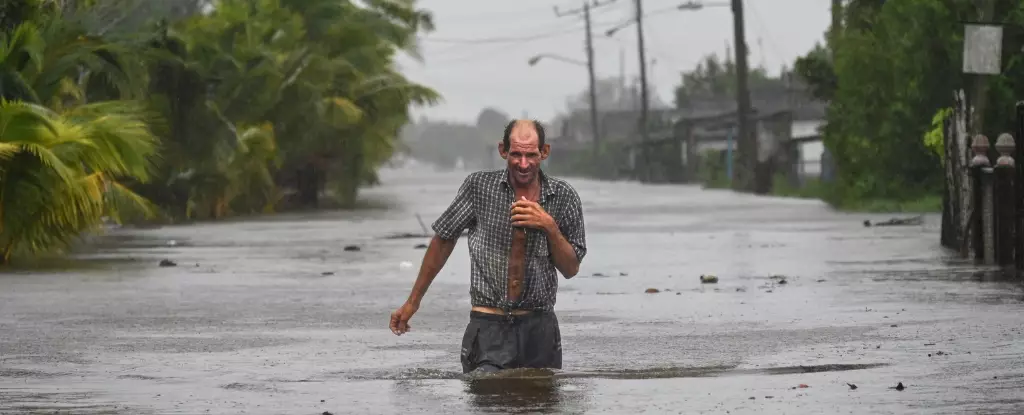As powerful tropical cyclones sweep across the globe, particularly impacting regions like Taiwan and the southeastern United States, the immediate devastation is often front-page news. However, emerging research sheds light on an often-overlooked aspect of these natural disasters: the long-term mortality rates that far exceed official reports. A recent study estimates that the long-term death toll from such storms may be approximately 300 times greater than the immediate fatalities acknowledged by authorities, revealing a chilling and complex legacy of ecological havoc and human suffering.
The groundbreaking research analyzed data from 501 tropical cyclones striking the continental United States between 1930 and 2015. Surprisingly, while the average immediate death toll registered during these storms is around 24, the researchers discovered that the broader impact—considering excess deaths in the 15 years following each storm—ranged between 7,000 and 11,000 for each event. This stark contrast underscores a profound public health concern, as tropical cyclones not only claim lives in the moment but also destabilize communities, pushing them into a prolonged spiral of suffering that can last for years.
This shocking finding isn’t merely another academic statistic; it resonates with reality. The research suggests that tropical cyclones may account for between three to five percent of all recorded deaths along the affected Atlantic coast areas over the past 85 years. The total impact, potentially amounting to five million lives lost, positions these weather events as deadlier than car accidents or even wars, thereby challenging the narrative that focuses solely on immediate casualties.
Delving into how these disasters influence mortality rates reveals an intricate web of factors. Researchers identified several contributing elements that could lead to excess deaths post-cyclone, including economic instability, destruction of vital infrastructure, heightened pollution levels, and increased psychological stress on the affected populations.
For example, a hurricane can devastate local economies, prompting individuals to deplete savings meant for retirement or healthcare in order to repair their homes. In many instances, this economic strain leads to long-term health consequences that manifest years after the storm has subsided. Additionally, the study illuminated alarming disparities, revealing that babies born up to a decade after a hurricane in impacted regions have a significantly higher risk of early mortality. Particularly vulnerable are Black populations, for whom living in cyclone-affected areas correlated with 15.6 percent of all deaths from 1930 to 2015, accentuating the intersectionality of race and disaster vulnerability.
The impact of cyclones is not uniformly distributed across affected regions; it varies significantly by state. In Florida, for instance, an estimated 13 percent of deaths can be traced to the effects of hurricanes, while similar figures stand at 11 percent and 9 percent for North Carolina and South Carolina, respectively. This variation reflects differences in resilience, preparedness, and recovery strategies post-disaster. States like Florida, accustomed to experiencing hurricanes, tend to develop more robust mechanisms for community recovery than those that are less experienced, like Louisiana, where only eight percent of deaths were linked to hurricanes.
However, with the looming specter of climate change, there is potential for hurricanes to strike unprepared areas, which poses an impending public health crisis. The resulting loss of resilience could lead to an alarming rise in mortality rates in regions that historically have not borne the brunt of such storms.
This new evidence serves as a crucial wake-up call for policymakers, emergency responders, and communities at large. Understanding the long-term effects of tropical cyclones is vital for creating effective post-disaster recovery programs that do not merely account for immediate casualties but also prioritize long-term health outcomes.
By expanding the conversation surrounding natural disasters to include their lasting legacy, we can better prepare our communities to mitigate the impact of these relentless forces of nature. Moving forward, investing in research and community resilience strategies tailored to the unique vulnerabilities of each affected region will be paramount in combating the ongoing toll of tropical cyclones in our increasingly volatile climate.



Leave a Reply